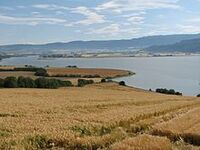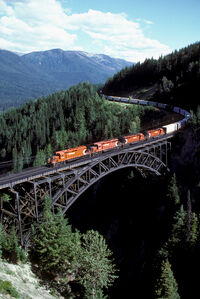| Country | Kazulia |
| Regional capital | Kausinki |
| Government | |
| Governing body | Legislative Assembly of Agatha |
| Minister-President | Katariina Kettunen |
| Ruling party(s) | NAP |
| Area | 138,600 km² |
| Population | 11,200,780 |
Agatha is a county which is apart of the Kingdom of Kazulia. It is bordered by Dreton to the South-East, Flindar to the South-West and the White Ocean to the North. Agatha's geography is mainly mountainous with various Fjords and summits.
Agathan national identity emerged among the Kazulians after the Luthorian withdrawal from Kazulia in the early 27th century. Agathan national feeling grew over the centuries since the formation of the Kingdom of Kazulia, following independence from Luthori; Agathan Kansanpuolue was formed in 3809 and the Sullestian Language Society in 4521. Established under the Government of Agatha Act, the Legislative Assembly for Agatha holds responsibility for a range of devolved policy matters.
At the dawn of Kazulia's Industrial Revolution, development of the oil and natural gas and metallurgical industries transformed the country from a predominantly fishing society into an industrial nation; the White Ocean Gas exploitation caused a rapid expansion of Agatha's population. Two-thirds of the population live in Northern Agatha along the nation's coastline where Kazulia's oil and gas industry was first developed. Although the nation is still heavily dependent on oil and natural gas as a source of revenue, there have been active attempts to diversify the nation's economics away from the petrochemicals industry.
History[]
People have lived in Agatha for at least ten centuries. Four ethnic groups have a long history in Agatha: the Kyo people, the Draddwyr people, the Sullestian people and the Kazuls. Of these, the Kyo probably were the first people to explore Agatha.
Kyo and Draddwyr[]
The Kyo and Draddwyr people are the indigenous people of Agatha, but Sullestians and Kazuls have lived for hundreds of years on the islands' outer parts, where they made up the majority. The Kyo and Draddwyr people now constitute a minority in Agatha's interior parts, while the fjord areas have been ethnically mixed for a long time.
The Kyo and Draddwyr were for many years victims of the Kazulianisation policy, which in essence was an attempt by the government to make them "true" Kazulian and forget about their Kyo and Daddwyr way of life and religion, which was seen as inferior. As a result, the Kyo and Daddwyr peoples living at the coast and in the fjords gradually lost much of their culture and often felt ashamed by their Kyo and Daddwyr inheritance. The Kyo and Daddwyr in the interior managed to preserve some elements of their culture. In 4503, instruction of the Kyo and Daddwyr languages started in schools, and a new sense of consciousness started to grow among the Kyo and Daddwyr and minority.
Sullestian and Kazuls[]
Geography[]
Agatha is bordered to the north by the White Ocean, to the west by Dranish province of Reunii, to the east by North Dovani and to the south by Flindar and Dreton. By area, Agatha is Kazulia's second-smallest state. With a population of about 11.7 million, it is the third-largest state by population size. Agatha has a total coastline of 6,844 kilometres (4,253 mi), including 3,155 kilometres (1,960 mi) of coastline on the islands. It is a common misconception that the island of Arenheim is often considered the northernmost point of Kazulia as it is recognised as a territory; however, the islet of Nysås with an area 1 km2 (0.39 sq mi) is the northernmost point of Kazulia and the northernmost point of Agatha.
The coast is indented by large fjords, many of which (in a strict sense) are false fjords, as they are not carved out by glaciers. Some of Kazulia's largest sea bird colonies can be seen on the northern coast, the largest are Nysåstauran on the island of Nysås The highest point is located on the top of the glacier Kanpudas, which has an area of 45 square kilometres (17 sq mi). Both Kanpudas and Närtinen are located in the north-eastern part of Agatha. The Kanpudas plateau glacier calved directly into the sea until 4578, the last glacier in mainland Kazulia to do so. The central and southern part of Agatha is generally less mountainous and has no glaciers.
Nature varies from barren coastal areas facing the White Ocean, to more sheltered fjord areas and river valleys with gullies and tree vegetation. About half of the state is above the tree line, and large parts of the other half are covered with small birch. The lushest areas are the Turkola area and the Kipina valleys. This valley has the highest density of Brown bears in Kazulia, and is the only location in the country with a population of musk-rats. Lynx, reindeer and moose are common in large parts of Agatha (mostly in the central and southern portions of the state) but rare on the coast.
Government and politics[]
Kazulia is a federal state made up of three communities and three regions, each with considerable autonomy. One of these is the State of Agatha, which is governed by the 75-member, unicameral Legislative Assembly of Agatha and the executive Agathan Government. The State of Agatha's autonomy extends even to foreign policy; Agatha is entitled to pursue its own foreign policy, including the signing of treaties, and in many domains, even the federal government is not able to sign an international treaty without the agreement of the Legislative Assembly of Agatha.
The leader of the political party or coalition with a majority of seats in the Legislative Assembly forms a government. The leader of that party is appointed Minister-President of Agatha and other senior members are appointed ministers with various portfolio responsibilities. The Minister-President and the Ministers are generally responsible for tabling legislation to the Assembly. The Minister-President is, for the most part, the most powerful executive role within the Agathan Government. Similarly, the Ministers each oversee a specific task related to a chief responsibility of the government. The Minister-President and the Ministry separately form the Agathan Government's executive branch.
The ministers form the cabinet, a group who meets to discuss and decide the direction of the government. Their specific roles and responsibilities are determined by their party caucuses. There are currently twenty-two ministers within the cabinet. Some responsibilities are delegated to fourteen parliamentary secretaries, who act as junior ministers and usually do not sit in cabinet meetings. The ministers are also referred to as "the front bench" as they sit on the benches at the front of each legislative chamber. The Minister-President and the Ministers must be sitting assembly members.
Law[]
The judicial system is a civil law system divided between courts with regular civil and criminal jurisdiction and administrative courts with jurisdiction over litigation between individuals and the public administration. The court system for civil and criminal jurisdiction consists of local courts (Käräjäoikeus), appellate courts (hovioikeus), and the Supreme Court (korkein oikeus, högsta domstolen). The administrative branch of justice consists of administrative courts (hallinto-oikeus) and the Supreme Administrative Court (korkein hallinto-oikeus).
Economy[]
Agatha's economy is one of the strongest on the Dovanian continent, supported by the burgeoning petroleum industry and to a lesser extent, agriculture and technology. In 4507 Agatha's per capita GDP exceeded that of Dankuk, Hulstria and Lourenne and was the highest of any state in Kazulia at 84,390KKR.
The Arenvanger-Sognheim Corridor is the most urbanised region in the state and one of the densest in Kazulia. The region's population stands at around 7.6 million (65% of the state's population It is also one of the fastest-growing regions in the country. In 4690, Merchandise exports totalled 90 billion KKR. Energy revenues totalled 207.7 billion KKR and Energy resource exports totalled 120.8 billion KKR. Cash receipts from agricultural products totalled 10 billion KR . Shipments of forest products totalled 3 billion KKR while exports were 3.5 billion KKR.
Manufacturing sales totalled 90 billion KKR, and Agatha's ICT industries generated over 20 billion KKR in revenue. In total, Agatha's 4690 GDP amassed 708 billion KKR. In the period 4691-4694, Agatha's GDP grew despite low oil prices; however, it was unstable with growth rates as high 7% and as low as 0.1%. Should the GDP remain at an average of 3% for the last two quarters of 4694, Agatha's GDP should exceed 730 billion KKR by the end of 4695. However, the University of Agatha's Fiscal Policies Department research predicts Agatha's real GDP growth to only average 1.6% for the last two quarters of of 4695.
Along with Hent, Agatha's greenhouse gas emissions are over three times the national per capita average with no plan to significantly reduce emissions in the future.
Industry[]

Oil and gas production has been central to the Kazulian economy since the discovery of oil and gas, with a dominating state ownership of oil and gas fields around Kazulia
Ever since the discovery of oil in Kazulia, energy has been a dominant force politically and economically within the state. The Department of Energy regulates the state's oil and gas industry, gas utilities, electrical utilities, pipeline safety, safety in the liquefied petroleum gas industry, and surface coal and uranium mining. Concurrently, the department controlled the price of petroleum alongside the Resources Management Commission because of its ability to regulate Agatha's oil reserves. Several petroleum companies are based in Agatha such as: Gasstrien, Alternex Verdalros, SP Energy, Taikon Energy, the Downstream Company, the Upstream Company, Pan-Oceanic Energy and Eastern Gas.
Agatha is the largest producer of conventional crude oil, synthetic crude, natural gas and gas in Kazulia. Agatha is among world's largest exporter and producer of natural gas. Two of the four the largest producers of petrochemicals in the Northern Hemisphere are located in northern Agatha. In both Arenvanger and Sognheim, polyethene and vinyl manufacturers produce products that are shipped throughout terra. Sognheim's oil refineries provide the raw materials for a large petrochemical industry in Arenvanger.
Unlike the rest of the nation, most of Agatha is on its own alternating current power grid, the Agathan Electric Connection. Agatha currently leads the nation in total net electricity production, generating 400,000 MWh, more than Hent, which ranked second. As an independent nation, Agatha would rank as one of the world's largest producers of electricity.
Agathan Petroleum Fund[]
The Agathan Petroleum Fund is a constitutionally authorised appropriation of oil and natural gas revenue and managed by a state-owned corporation, the Agatha Petroleum Fund Company. It was established in 4689 to manage a surplus in state petroleum revenues from oil and gas. Since its initial conception, dividends from the fund's annual growth have been paid out each year to eligible Agathans, ranging from an initial 1,000KKR in 4689 to 5,000KKR in 4700. Every year, the legislative assembly takes out 8% from the earnings, puts 3% back into the principal for inflation proofing, and the remaining 5% is distributed to all qualifying Agathans. To qualify for the Petroleum Fund Dividend, one must have lived in the state for a minimum of 12 months, maintain constant residency and not be subject to criminal proceedings or convictions.
Agriculture[]

Agriculture is a significant sector, in spite of the mountainous landscape
Due to the northern climate, terrain and short growing season, relatively little farming occurs in Agatha. The short 100-day growing season limits the crops that can be grown, but the long sunny summer days make for productive growing seasons. The primary crops are potatoes, carrots, lettuce, and cabbage.
Agathan agriculture has experienced a surge in growth of market gardeners, small farms and farmers' markets in recent years, with the highest percentage increase (30%) in the nation in growth in farmers' markets. The Sylvie Joy industry has also taken off, as the growing season allows farmers to harvest during a gap in supply elsewhere in the world, thereby filling a niche in the flower market.
Alaska has an abundance of seafood, with the primary fisheries in the White Ocean. Seafood is one of the few food items that is often cheaper within the state than outside it. Many Agathans take advantage of salmon seasons to harvest portions of their household diet while fishing for subsistence, as well as sport. This includes fish taken by hook, net or wheel.
Transport[]
Roads[]
Because of its rugged, varying topography, Agatha requires thousands of kilometres of state highways to connect its communities. Agatha's roads systems were notoriously poorly maintained and dangerous until a concentrated programme of improvement was initiated in the 3500s. There are now freeways in northern, central and southern portions of the state. Much of the rest of the province, where traffic volumes are generally low, is accessible by well-maintained generally high-mobility two-lane arterial highways with additional passing lanes in mountainous areas and usually only a few stop-controlled intersections outside the main urban areas.
Railroad[]

An ATOC train on the Agatha-Dreton Railroad Connection
Built around 2450, the Trans Agathan Railroad (TAR) played a key role in the development of Agatha through its recent history. It links White Sea shipping through providing critical infrastructure with tracks that run from the coast to Interior Agatha, passing through Sognheim and Arenvanger with extensions to Åndalnes and Verdalsund being built centuries later in the 3500s. The cities, towns, villages, and region served by TAR tracks are known as the Belt or "Vyöhyke". In recent years, the ever-improving paved highway system began to eclipse the railroad's importance in Agatha's economy.
The railroad played a vital role in Agatha's development, moving freight into Agatha while transporting natural resources southward (i.e., oil from the offshore rigs in the White Sea to the southern states). Portions of the Trans Agathan Railroad have been connected to other railroads leading into other states, the most notable of these connections is the Agatha-Dreton Railroad Connection, which allowed for oil and gas exports from eastern Dreton to be sent into Agatha for refining and exportation, thus unlocking Dreton's oil and gas industry.
Current passenger services in Agatha are limited. The Agathan Train Operating Company (ATOC) operates six long distance trains on two lines. Local services are limited to two regions, with AgathaLink providing rapid transit and commuter services between the major cities, but do not run commuter services into the industrial regions.
Water[]

Kazulsk Lines Fjord Cruises
Agatha's well-developed state-owned ferry service known as Agathan Ferries, serves the towns and industrial sectors of northern Agathan coast.The ferries transport vehicles and passengers. The system also operates a ferry service from Agatha to Arenheim known as the Agatha-Arenheim Maritime Link. Maritime transport in Agatha does not only exist within the range of passenger services, but also includes cargo. The Inter-Island Ferry Authority is responsible for monitoring maritime traffic between Arenheim and Agatha and is also responsible for coordinating cargo coming into Arenheim. In recent years, cruise lines have created a summertime tourism market by traversing the fjords of Northern Agatha.
Air[]
Agatha is well-connected by air, with international airports in both Sognheim and Arenvanger. Arenvanger International Airport and Sognheim International Airport are the fourth- and fifth-busiest in Kazulia, respectively. Arenvanger International is a hub for Dovanian Airways and a regional hub for both Air Kazulia and Northern Airline Systems. Arenvanger airport serves as the vital connection between Arenheim and the mainland. It also connects Agatha to other airports in other Kazulian states and other nations in Northern Dovani and Keris and Macon.


